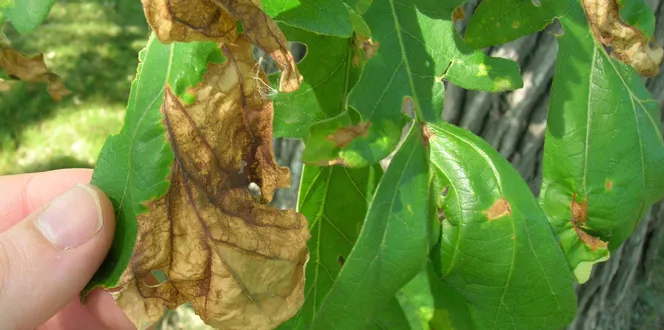Your tree’s trunk unites its leafy canopy above and its sprawling roots below. It’s what keeps it all together.
Essentially, the trunk is the stem. And just like if the stem broke on a flower, it’s not good news if the trunk gets injured or starts rotting.
Andy from Florida said, “I have a large oak tree with rotting on one side at the base of the trunk. Can I take a chainsaw and cut out the rotten wood and paint it to help the tree survive?”
Read on to learn what to do (and what not to do).
Is there any treatment for tree trunk rot? Can I repair it?
Let’s start by answering Andy’s question: We don’t recommend cutting off and sealing a rotting portion of a tree trunk.
Cutting rotten wood leaves the plant vulnerable to more infections, which makes the situation worse. That's because trees can’t “heal” damaged tissues. They try to “seal” them off and continue to grow.
Plus, wound dressing (also known as tree paint) doesn’t close wounds or prevent the spread of diseases. It may hurt more than help, which could waste your time and money.
Trying to cut out the problem wouldn’t solve anything because the issue is deeper than that.
Trees rot because of a disease called wood decay, which usually targets old, large specimens and infects their wood from the inside out.
In most cases, it’s tough, if not impossible, to treat wood decay.
Here’s what you want to do instead if your tree trunk is rotting: call an ISA Certified Arborist® asap.
Rot could be a sign that your tree's weak or unstable. You want to know right away if it's at risk of falling on your home (especially if you’re in the middle of a nasty storm season).
During the inspection, your arborist can talk to you about options. She could recommend one of the steps below:
- Leave it to your tree. If it’s healthy and the decayed area is small, there’s a chance that it will seal over the rotting wound as it naturally grows new wood.
- Initiate PHC (plant health care). Water. Fertilization. Pruning. They can all do wonders to help extend the useful life of your plant (if it isn’t at risk of falling!). Also, take care and try to avoid any additional injury to the tree.
- Remove it for safety if trunk rot has weakened the tree to the point where it poses an unacceptable risk to people or property.





